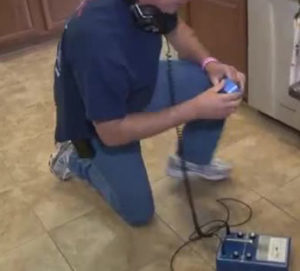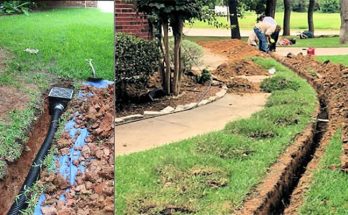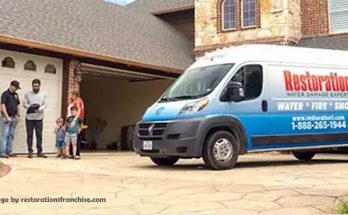 Sometimes a homeowner doesn’t know that there’s a leak beneath their foundation slab right away. They may keep getting unusually high water or energy bills even though the water use in the house hasn’t increased. If they listen, they might hear the sound of rushing water even though none of the fixtures in the house are on. Indeed, there seems to be a drop in the water pressure when they or someone in the family takes a shower. When they go to their basement, they may find a spot on the floor that is hot or damp. If the slab is covered by a carpet, the carpet is damp. A hardwood floor over the leak warps, and the homeowner may notice or smell mold and mildew. The hot water heater runs and runs. These are all signs of a slab leak.
Sometimes a homeowner doesn’t know that there’s a leak beneath their foundation slab right away. They may keep getting unusually high water or energy bills even though the water use in the house hasn’t increased. If they listen, they might hear the sound of rushing water even though none of the fixtures in the house are on. Indeed, there seems to be a drop in the water pressure when they or someone in the family takes a shower. When they go to their basement, they may find a spot on the floor that is hot or damp. If the slab is covered by a carpet, the carpet is damp. A hardwood floor over the leak warps, and the homeowner may notice or smell mold and mildew. The hot water heater runs and runs. These are all signs of a slab leak.
How to Test for a Slab Leak
There are some things the homeowner can do to see if there might be a slab leak. First, they need to turn off all of the water fixtures in the house at the main valve. Then, they should check the water meter, which is usually outside the house. They should take lid off and look at the red triangle. If it is rotating, that means that water is still running, and there is a leak somewhere.
Plumber’s Slab Leak Test
Fortunately, a slab leak is a simple if not particularly easy problem for a reputable plumber to solve and they have a more sophisticated slab leak detector. First, they put an inflatable test ball with an air hose attached to it into the clean out in the main sewer line. Then, they fill the ball with air so no water can get pass it, and turn on all of the fixtures in the house until the pipes back up. Then, at least one of the toilets is removed, and the water level at the flange, or the place where the toilet meets the drain is observed. If the water level drops after some minutes, there’s a leak.
Fixing the Leak
There are two ways to access the problem area to fix a slab leak. The plumber can tunnel into the house from the outside or use a jackhammer to break up the slab and fix it. Most plumbers prefer to come in from the outside as it is less disruptive to their customer.
If there is only a small leak or just one leak in the pipes, epoxy restoration can repair the leak. However, if there is one leak, chances are good that there are a few. In that case, the plumbing contractor will need to re-pipe a line. In the most invasive type of repair, the pipes will need to be rerouted. This is the solution when the leaks are not just under the slab but in the walls.
When the job is done, the plumber performs another leak test to make sure that there are no more leaks anywhere in the house.




